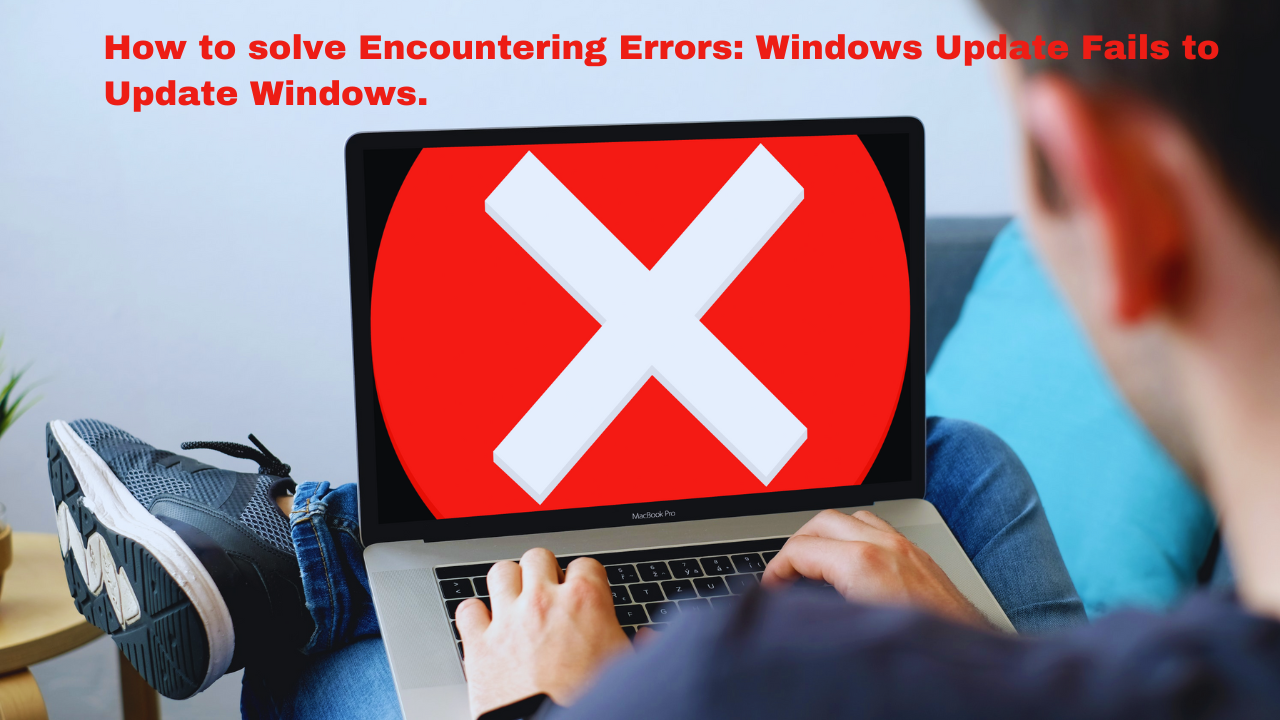If you are a Windows user, you must have experienced at least one instance where Windows update fails to update Windows. This can be quite frustrating, especially when you need to update your system to keep it secure or to take advantage of the latest features.
In this article, we will discuss the common causes of Windows update failures and provide some solutions to help you fix the issue..
Understanding Windows Update Error Codes
To effectively troubleshoot Windows Update errors, it’s essential to understand the meaning behind the error codes provided. These codes offer valuable insights into the underlying issues and help in devising appropriate solutions.
For instance, Error 0x80070002 indicates that there may be a problem with the Windows Update cache or the software distribution folder. In contrast, Error 0x800705b4 suggests that the Windows Update service is not responding or is experiencing delays.
Common Windows Update Errors
Windows Update errors come in various forms, each indicating a specific issue in the update process. Some of the most prevalent errors include:
- Error 0x80070002: This error usually occurs when the system is unable to locate the specified file during the update process.
- Error 0x80070057: It indicates an issue with the Windows Update service or components.
- Error 0x8024402F: This error suggests a problem with the Windows Update server or network connection.
- Error 0x80240034: It signifies a corrupt Windows Update database.
- Error 0x800705b4: This error often occurs when the Windows Update service is not running or is experiencing issues.
Causes of Windows Update Failures
There are several reasons why Windows update fails to update Windows. Here are some of the most common causes:
Internet connection issues
- Windows Update requires a stable and reliable internet connection to download and install updates.
- If your internet connection is slow, unstable, or interrupted, Windows Update may fail to download or install updates.
Lack of disk space
- Windows updates require a significant amount of disk space to download and install.
- If your hard drive is running low on space, Windows Update may fail to complete the update process.
Outdated drivers
- Outdated or corrupted drivers can cause Windows Update to fail.
- This is because the updates may require new or updated drivers to work properly.
Malware or virus infections
- Malware or virus infections can cause Windows Update to fail or prevent it from working properly.
- This is because malware or viruses can interfere with the update process, damage system files, or modify registry settings.
Solutions for Windows Update Failures
Now that we know the common causes of Windows update failures, let's discuss some solutions to help you fix the issue:
Manual Troubleshooting Steps
- Check Internet Connection: Ensure that your device is connected to a stable internet connection to facilitate the update process.
- Restart Your Computer: Sometimes, a simple restart can resolve temporary glitches and allow the update to proceed smoothly.
- Free Up Disk Space: Insufficient disk space can hinder the update process. Delete unnecessary files or move them to an external storage device to free up space.
- Disable Third-Party Antivirus: Sometimes, third-party antivirus software may interfere with Windows Update. Temporarily disable it and attempt to update again.
Check your internet connection
- Make sure that your internet connection is stable and reliable.
- You can check your internet connection by opening your web browser and visiting a website.
- If you are experiencing slow or unstable internet, try resetting your modem or router.
Free up disk space
- Free up disk space by deleting unnecessary files, uninstalling programs you no longer use or moving files to an external hard drive.
- You can also use the Disk Cleanup tool to remove temporary files, old Windows installations, and other unnecessary files.
Update drivers
- Update drivers for your hardware components such as graphics card, sound card, and network adapter.
- You can do this by visiting the manufacturer’s website and downloading the latest driver software for your hardware.
Scan for malware or viruses
- Scan your system for malware or viruses using your anti-virus software.
- If your anti-virus software does not detect any issues, try using a malware removal tool such as Malwarebytes.
Reset Windows Update
If none of the above solutions work, you can try resetting Windows Update. To do this, open Command Prompt as an administrator and run the following commands:
- net stop wuauserv
- net stop cryptSvc
- net stop bits
- net stop msiserver ren C:\Windows\SoftwareDistribution SoftwareDistribution.old ren C:\Windows\System32\catroot2 catroot2.old
- net start wuauserv
- net start cryptSvc
- net start bits net start msiserver
Preventive Measures
To minimize the likelihood of encountering Windows Update errors in the future, consider implementing the following preventive measures:
- Regular Maintenance and Updates: Ensure that your system is up to date by installing the latest updates and patches released by Microsoft.
- Avoiding Common Pitfalls: Be cautious when installing third-party software or making system modifications, as they may interfere with the update process.
